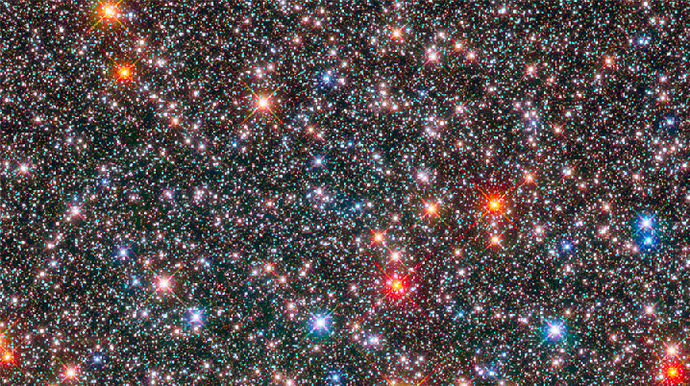Checks out, it’s pretty far from the sun!
One problem I see is that wax would probably not be too sticky at Titan temperatures.
This conversation’s reminding me of an old sci-fi book I read ages ago (which I haven’t been able to remember the title of by googling, darn it), where the characters ended up developing inflatable fins built into their clothing (loosely based on dolphins, IIRC) that could be used to “swim” through the atmosphere in low gravity locations…
Cross country ski wax might do it.
Ah hah! Finally found a set of search terms to hit on it. “For The Birds”, by Isaac Asimov.
I smell a fix!
Alas, the “rainbow” is missing green.
I didn’t title it; I was just happy see something inspiring instead of depressing as all hell in the news for once…

It is beautiful. My joke is terrible, I see in hindsight.
It’s not easy, being “green.”

What would make a green star, I wonder. I guess all the nucleosynthesis routes bypass copper and the like, or at least drown it out.
Looks like you can only have star colors along the inner black curve (the outer curve being the colours of the rainbow):

If star color is just black body, dependant on temperature (?), where does astro-spectroscopy come in?
I thought it was the other way 'round – the colour of the star told you its temperature.
Yes, but I’m talking about the spectroscopic lines that tell astronomers the makeup of a body in the case of both emitted and reflected light.
I think it’s a combination of black body with specific absorption lines, and possibly emmission lines, but not as important as the black body range.
In stellar spectroscopy you’re looking at light being adsorbed, like this:
the black adsorption lines show which elements are present in the star’s atmosphere, as the black-body radiation from the star gets blocked by the mix of colder gaseous elements above the star’s surface.
It doesn’t do much to change the perceived colour of the star, because the black-body radiation is so dominant that the absence of a few spectral lines will go unnoticed unless you look for it.


